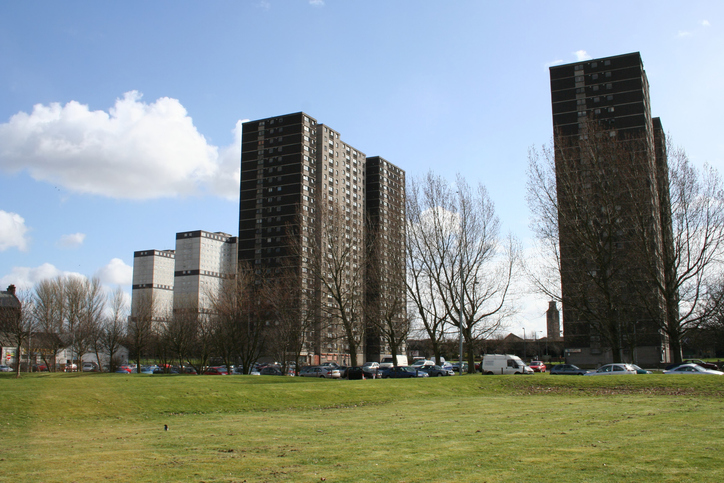Rules about cladding on buildings are constantly changing following the devastating tragedy at Grenfell Tower. We discuss if homeowners will be affected by the changes in law and regulations.
What is cladding?
Cladding is an external material used to insulate and improve the appearance of buildings. It can also help protect buildings from weather. Cladding is often found in high-rise buildings.
Why is it so important following the Grenfell disaster?
The Grenfell Tower fire in 2017 raised awareness about cladding and fire safety issues. It became clear that despite building regulation sign off, cladding in the building was unsafe and increased the risk of fire spreading. Investigations revealed that the Grenfell Tower fire was facilitated by combustible plastic cladding. The Grenfell Tower Inquiry has been set up to investigate the circumstances leading up to the fire. Phase 1 of the Inquiry concluded in December 2018 however Phase 2 has currently been suspended due to COVID-19.
How have the rules changed?
In January 2020, the government advised that owners of all multi-storey residential buildings should investigate the risk of cladding that is combustible. A Fire Safety Bill is due to be introduced which would re-iterate the responsibility of building owners and management agencies to remedy cladding issues. In December last year, a certificate of compliance called External Wall System 1 (form ESW1) was introduced to ensure building regulations requirements are met. This is required for residential buildings above 18m in height, however, if the type of occupation of the building significantly increases risk to life (in the event of a fire), then an EWS1 form may be required for lower height buildings; for example in a care home. The EWS1 form is for building owners to obtain and will either (a) confirm that there are no combustible materials or (b) recommend that remedial works are carried out to buildings with cladding. The professional will then sign the form which will remain valid for 5 years and covers the entire building.
What concerns are there about the EWS1?
Although this form enables building owners to confirm to valuers that the external cladding system has been assessed by a expert, a concern is that there may be a shortage of experts who are qualified to carry out such assessments. There are also concerns about the backlog involved as issuing these certificates will be an extremely long process due to the sheer number of buildings over 18m in height. The government has however announced measures to support fire engineers advising on the safety of high-rise buildings to combat this. In addition, the survey is not mandatory therefore not all mortgage lenders have implemented the EWS1 as a requirement yet. Furthermore, some lenders appear to remain reluctant to lend despite an EWS1 being issued. Notably, only the original developer can request the EWS1 which makes the process even more time consuming. It can also prove very costly to obtain this certificate.
Who do these changes affect?
Some freeholders have charged leaseholders for the cost of removing cladding by incorporating the costs as part of service charges. Leaseholders should liaise with freeholders and management companies to clarify the cost arrangements. In most cases this will be the subject of mandatory statutory consultation with the Leaseholders. It has also become more challenging to obtain mortgages for high-rise properties. Valuations from mortgage lenders establish whether there is cladding present in the building. If the cladding does not meet the necessary requirements, this could significantly impact valuations. As a seller, if you live in a building which has unsafe cladding, this may affect the saleability of your property or your ability to re-mortgage. Your solicitor will be able to establish the existence of cladding during the enquiries stage of a conveyancing transaction. When purchasing a property with cladding, a copy of the BR 135 fire safety certificate should be supplied as well as a Fire Risk Assessment. If there is not an existing Fire Risk Assessment, then your solicitor should ensure that confirmation is obtained from the freeholder that there are active plans for this to be carried out.
What next?
The government has continued to re-assure the public that removal of unsafe cladding from buildings is critical to public safety and a top priority. In the March Budget, it was announced the government will provide £1 billion in 2020-21 to fund the removal/replacement of unsafe cladding systems, in addition to the £600 million which the government has already made available to ensure the remediation of the highest risk cladding. It remains to be seen what long-term impact form ESW1 has on lenders and how funds will be allocated by the government. It is hoped that Phase 2 of the Inquiry will bring some much needed clarity and reassurance to freeholders, managing agents, leaseholders, sellers/buyers, lenders and fire risk professionals.
If you would like to discuss anything further or you are concerned about the impact cladding may have on your property transaction, please do not hesitate to contact our residential property team who will be happy to assist you.

